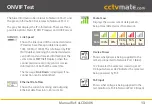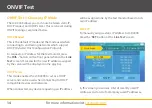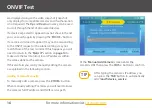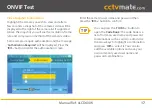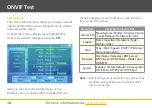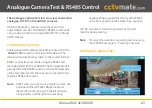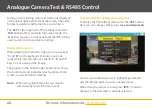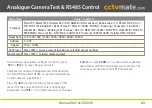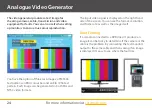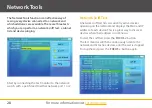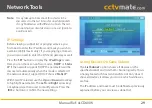
27
Manual Ref: xLCD400K
RJ45 Cable TDR Test
Break Testing
If you suspect a cable has been damaged you can
perform a break test. To do this simply connect one
end of the cable to either network port.
Test port 1 or 2 and after a few seconds the length
of each core will be displayed. One or more cores
significantly shorter than the known cable length
or other cores would suggest a break in the cable at
that point.
Skew Testing
Skew testing shows the delay in each core when a
signal is transmitted over a network cable. When data
is transmitted over network cables it is broken down
into packets and sent sequentially over different cores.
Large delays on one or more cores could result in
data packets arriving out of sequence causing data
corruption and possibly loss of video.
To perform a skew test connect one end of your
network cable to network port 1 and the other end
TIP
The delay skew is usually
between 25 and
45ns
. Anything higher than 45ns and you
may encounter problems. High quality
cables can have delays as little as 8ns!
to network port 2. The test monitor will then send a
signal down the cable and measure the delay at the
other end. The resulting delay on each core is then
displayed in nano seconds (ns).

